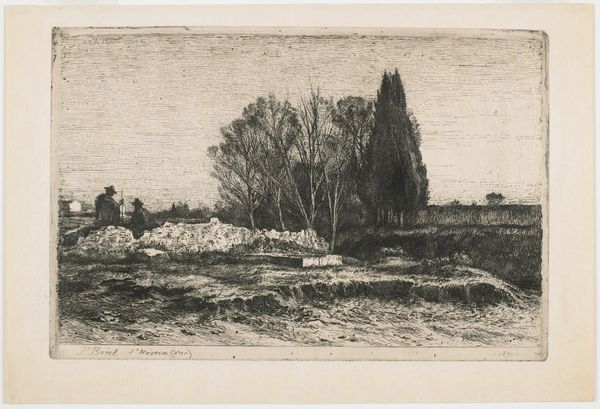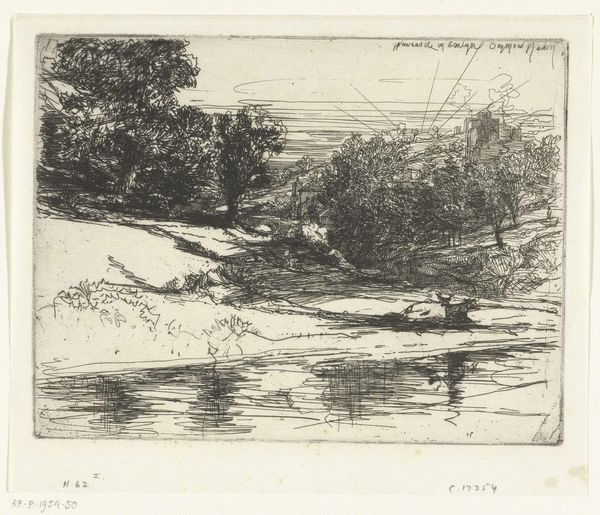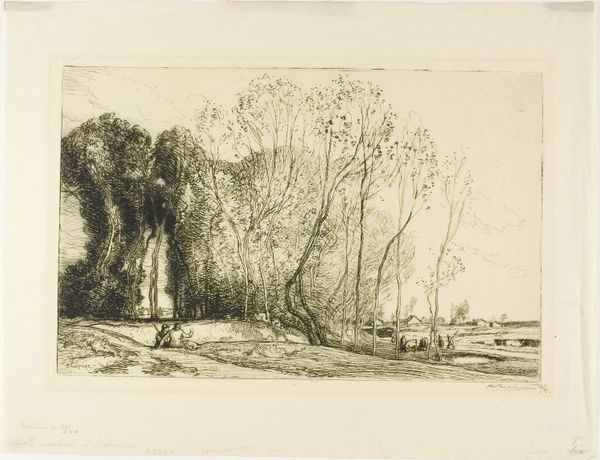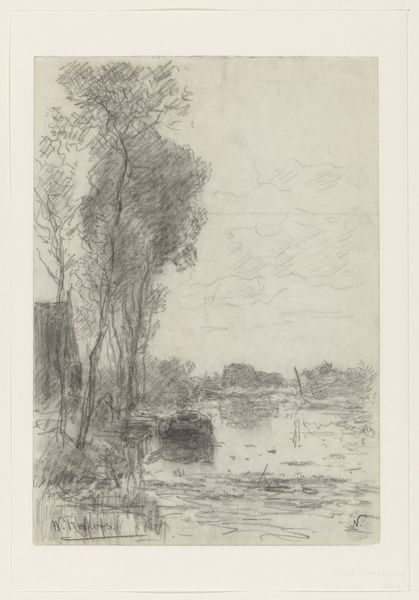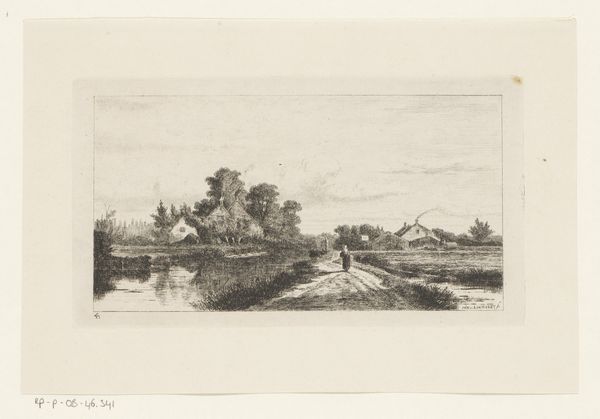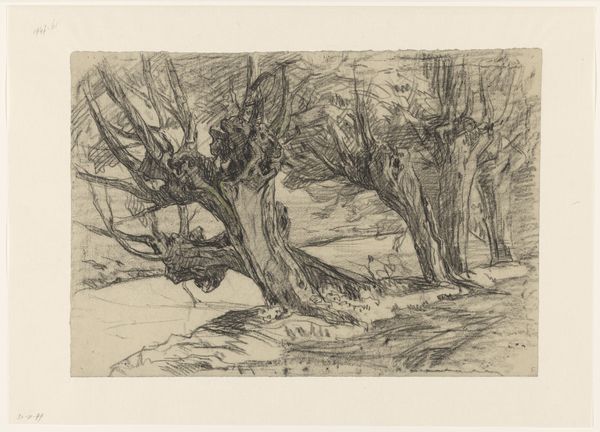
Dimensions: height 140 mm, width 204 mm
Copyright: Rijks Museum: Open Domain
Sir Francis Seymour Haden made this etching called 'Thames Ditton' at some point in the late 19th century. Here, the artist depicts a tranquil scene on the River Thames. The etching process itself is worth considering. Haden was a key figure in the etching revival movement, advocating for etching as a vital, original art form, distinct from mere reproductive engraving. This movement challenged the dominance of painting within the art establishment, seeking to elevate printmaking to a position of greater artistic respect. The choice of the Thames as a subject is also significant. During this period, the river was not only a source of leisure and recreation, but also a vital artery of commerce and industry. Artists often turned to the Thames to capture both the picturesque beauty of the English countryside, and, sometimes, the less savoury realities of urban expansion and industrial development. Understanding Haden's etching involves exploring the artistic debates of his time, as well as consulting historical records, and publications that can provide more about the social and environmental history of the Thames in the late 19th century.
Comments
No comments
Be the first to comment and join the conversation on the ultimate creative platform.



